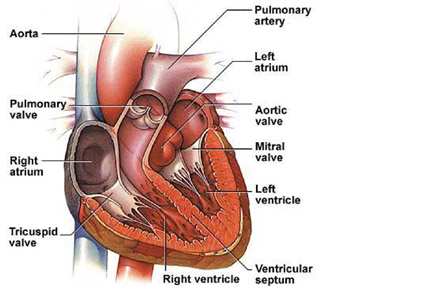Blalock – Hanlon Procedure
Introduction
The Blalock–Hanlon procedure is a type of heart surgery. It involves the intentional creation of a septal defect for the purpose of altering the flow of oxygenated blood. In earlier times, transposition of the great arteries (TGA) was an essentially untreatable, rapidly fatal anomaly. This was true until Blalock and Hanlon devised the atrial septectomy operation in 1950to improve mixing of blood in the heart. This operation allowed survival of many newborns with transposition and poor mixing to survive infancy for the first time and become candidates for later correction. Sub-sequently, other palliative operations have been devised, such as open atrial septectomy with occlusion inflow with or without hyperbaric oxygenation. In spite of its success, the Blalock-Hanlon procedure (BH) and other types of surgical atrial septectomy have been criticized on several grounds. Some of the issues include:
• the excessive mortality rate
• the pericardial space can develop adhesions postoperatively that lead to excessive bleeding and thickening of pericardium. This makes it unsuitable for use as a patch in the final repair
Iran is among the top 10 countries in treating cardiovascular diseases, while it ranks first in the Middle East

• the atrial conduction pathways are disturbed, leading to a high probability of postoperative arrhythmias
• infants who survive continue to face the risk of cerebral thrombosis or embolism
• many infants die in the interval between septectomy and final correction.
The Rashkind balloon atrial septectomy has been recommended as a way of reducing the mortality rate, development of pericardial adhesions, and arrhythmias. Early correction is being advocated to reduce the number of patients lost in the interval between palliation and definitive correction.
Technique
• After induction of anesthesia, catheters were inserted in the brachial artery and vein for central arterial and venous pressure monitoring respectively.
• Arterial blood samples are taken and sent for blood gas analyses every 15 to 30 minutes throughout the procedure.
• Severe metabolic acidosis is treated appropriately, but bicarbonate is not given prophylactically.
• An atrial septal defect is created by the Blalock-Hanlon technique through a lateral thoracotomy performed in the right fifth intercostal space.
• The pericardium is then incised longitudinally posterior to the phrenic nerve. The right pulmonary artery and 4 pulmonary veins are encircled and occluded with heavy silk ligatures.
• After this, a curved vascular clamp is placed with one blade remaining anterior to the right atrium and the other posterior to the left atrium.
• Parallel incisions are made in the right atrium and the anterior surface of the right pulmonary vein confluence. The atrial septum is withdrawn, and excised. As soon as the incision is closed, the color of the right atrium starts improving. After this, the encircling ligatures and vascular clamps are released.
• Following operation, if the infant exhibits vigorous respiratoryattempts and the arterial blood gases were satisfactory; the endotracheal tube is removed.
• If extubation is not possible, mechanical ventilation with a respirator is maintained as long as necessary. Blood gas values are determined frequently and appropriate measures taken to correct any abnormal electrolyte or blood gas findings. Digitalis, diuretics, or both medications are administered postoperatively if congestive heart failure occurred.
The Rashkind balloon atrial septectomy has been recommended as a way of reducing the mortality rate, development of pericardial adhesions, and arrhythmias.
This is a closed-heart surgery performed for improving the bluish cyanosis color in certain conditions such as transposition of great arteries or tricuspid atresia. While complete separation of blue and pink circulations is required in normal newborns, in transposition and several other anomalies, the two circulations must mix within the heart for the child to survive. A hole in the atrial septum becomes an efficient way to accomplish such mixing. Eventually, after some time anatomic or physiologic repair will follow for definitive treatment.